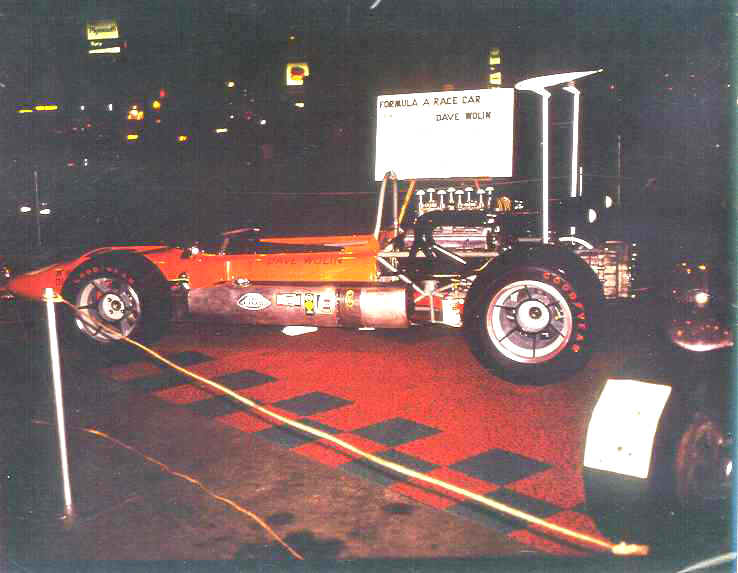
LeGrand Mk. 7 Formula 5000 - 1969 / 70
| Another terrible car, this looked to be
an inexpensive way to get into F5000. Unfortunately, it was basically a
Formula B car, designed for 250hp with a 500 hp Chevy in it. The
chassis
flexed so badly that at full throttle, exiting a corner, the tie rods
would bind on the frame rails. Of course, my own home built powerplants
didn't help, blowing up with regularity. We won some regionals and
divisionals but surviving anything more than 20 laps seemed problematic.
After DNS' at Donnybrooke, Road America, Lime Rock and Mosport, I determined that I didn't belong in the car or F5000.
My apologies to those who were running near me; sorry about the
continual shower of oil and parts.
What The Press Said About The Mk7 |
| The Mk7 was designed to contest the
SCCA 5 liter Formula A / Formula 5000 class. Previously, this class was a bit of a
catch all, but starting in 1968, the class was strictly a class for 5
liter engines based on production V8 blocks. Red LeGrand decided to
literally throw together a car from the parts bin. The Mk6 FB car was
used as the starting point. The chassis was widened, a large radiator
was fit in the nose, the engine bay was beefed up a bit , and external
side pod tanks were fitted. With many similarities to previous LeGrand
Mk3-6, the Mk7 is a tube space frame chassis, with the stated benefit
being that it is easier for the private entrant to repair than it would
be to repair a monocoque construction chassis.. Brakes were 10.5 in
diameter solid disks with Airheart single pot caliper. These were later
swapped for double pot Airheart calipers on the Mk7A. The rear brakes
used LeGrandís signature placement of the disk inboard of the upright
to improve cooling. Wheels were 9.5 in wide by 13 in. diameter front,
and 11 x 13 rear. 10 in and 14 in. x 15 in. diameter wheels were used on
the Mk7A.
The Mk7 was designed to use either the Chevy 302 or Ford 302. The chassis design was different for the two engines. In prototype form, a stock Camaro Z28 engine with wet sump was used with a McKay manifold and downdraft Webers. This engine produced 400-425 HP and the total engine cost was less than $1000. Customers were soon putting full race dry sumped engines in the cars. Most customers chose the Chevy over the Ford block. The original car used a ZF gearbox. The Hewland LG500 was chosen for later cars because it was easier to work on and because it provided more flexibility in gear selection. Wheel base was 90 in., with front and rear track being 57 in. Two 15-gallon gas tanks (the SCCA maximum allowed) are placed longitudinally on each side of the driver. Dry weight was 1270 lb. (rule minimum was 1250 lb.). Proprietary LeGrand cast magnesium parts were used for the wheels, uprights and wheel hubs. Steering was via LeGrand rack and pinion. In 1968, the Mk7 sold complete, ready to race, with a 450 HP Bartz dry sumped engine, for $13,372 |
